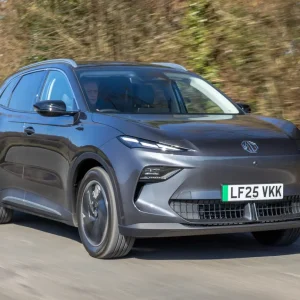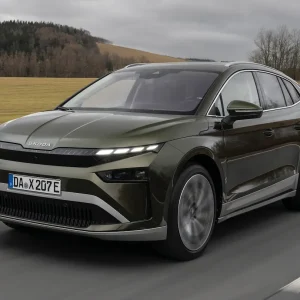The Alfa Romeo Giulia is a car that arrived amid huge expectation in 2015. It replaced the 159 in the premium sector – with rivals including the Audi A4, BMW 3 Series and Mercedes-Benz C-Class – after a gap of several years.
Its launch was pushed back a number of times, because it was important to ensure the car was right from the start.
Loved by driving enthusiasts, the Alfa Romeo brand has a special place in history, representing passion, performance and elegance.
Alfa’s fleet rehabilitation
However, it has struggled to find its place in recent years. The Mito three-door small car – sharing underpinnings with the Fiat Punto and outgoing Vauxhall Corsa – never quite hit the mark compared with the Mini. The Giulietta – an impressive and capable premium hatch when it was launched in 2010 – is now looking and feeling its age.
The Giulia should have been the car to create new impetus for Alfa, and while it did that to some extent, it was never quite what it should have been.
It might have looked the part, with balanced proportions and sleek styling, but inside it was rather dull and contained materials that didn’t feel as special as those in other premium cars.
For Alfa enthusiasts in the UK (and other right-hand drive markets), there would be no manual version, as the cost of engineering the car to accommodate the manual gearbox with right-hand drive was deemed prohibitive. Not that the eight- speed ZF automatic transmission we had was bad – it just demonstrated a ‘that’ll do’ attitude in a car that was brimming with promise.
And this is before we talk about fleet sales. Alfa Romeo has been undergoing a long rehabilitation within the fleet sector, with many customers not returning after having their fingers burned with the 156 and 147, suffering patchy reliability and a dealer network seemingly disinterested in fixing problems.
Things are much better now, and, particularly since the Giulietta, there is a place for Alfa on fleets. It has taken a while for the Giulia and Stelvio to register in true fleet sales, but they are making an impression.
Changes under the skin
The 2020 model year Giulia will arrive in the UK in January, and outward appearances are almost identical. In fact, if you chose the entry-level version of the Giulia (not available in the UK), it would come with halogen headlamps, when virtually all rivals now offer full LED headlights.
UK models will be equipped with xenon lamps, as they were previously, and Alfa claims adding LED to the Giulia at this mid- stage in the lifecycle would have required redesigned headlamps, money the company was seemingly not prepared to invest.
You have to venture inside the car to see where the money has been spent. The dashboard is much improved, with a better look and feel. The multimedia system has undergone a full overhaul, with a new touchscreen and intuitive functionality.
However, unlike some rivals, Alfa has also retained a rotary controller for the interface because it isn’t always safe or easy to focus on a touchscreen when the driver’s attention should be on the road.
The Giulia now comes with an optional full suite of active safety features, including lane-keeping assistance and adaptive cruise control, which can work in conjunction to provide a traffic jam assistance feature. Blind-spot warning can also help steer the car back into the lane should a vehicle be approaching and the driver has ignored the alert.
Higher specification
The equipment grade line-up has been revised, and diehard Alfa fans will be rejoicing that designations from the past have been revived. The entry-level car for UK customers will be the Super, stepping up to TI (Turismo Internazionale) for more equipment and a luxury feel. For a more sporty emphasis, customers can choose the Sprint, with the Veloce grade only offered on the most powerful petrol and diesel engines in the mainstream range. The range-topping Quadrifoglio update will come later in 2020.
As we published, Alfa Romeo UK still wasn’t able to confirm full UK specification, other than what appears in the standard equipment panel. No big deal, but the brand has also confirmed that the car is available for delivery to customers from January 2020, so presumably a great deal of faith is required for any customers to place an order at that point, gambling on what was expected to be included for the price.
However, Alfa is taking into account key equipment on rivals and trying to ensure the Giulia is competitive (except perhaps for the LED headlights).





